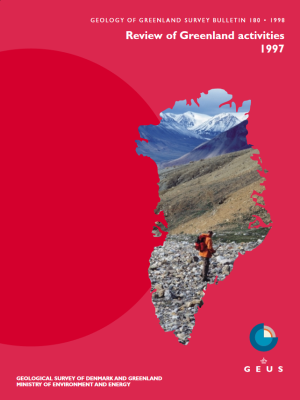Diagenesis and reservoir properties of Campanian–Paleocene sandstones in the GANT#1 well, western Nuussuaq, central West Greenland
DOI:
https://doi.org/10.34194/ggub.v180.5083Abstract
As part of a study on reservoir characterisation of western Nuussuaq, central West Greenland (Sønderholm & Dam 1998) the diagenesis and reservoir properties of sandstone units in the GANT#1 well located in north western Nuussuaq have been investigated (Kierkegaard 1998). The GANT#1 well was drilled during the summer of 1995 by grønArctic Energy Inc. (Calgary, Canada) as part of the company’s hydrocarbon exploration activities in the region. These also included the drilling of four other wells: GANW#1, GANE#1, GANK#1 and GRO#3 on the south-western coast of Nuussuaq (Fig. 1). The GANT#1 core was examined in order to elucidate the diagenetic and detritus factors that control the present porosity and permeability variations occurring in the Cretaceous – Lower Paleocene succession of western Nuussuaq. The examinations were carried out with standard petrographic methods, including X-ray diffractometry of mudstones and standard polarisation microscopy of thin sections from sandstones, supported by scanning electron microscopy (Kierkegaard 1998). Porosity and permeability measurements from the GANT#1 core generally reveal poor reservoir quality with a range in porosity from 4.92 to 18.79% and in permeability from 0.106 to 90.7 mD, but both porosity and permeability are greater in post-Campanian sandstones compared to Campanian sandstones (Kierkegaard 1998). The GANE#1 well provides a section through Upper Paleocene turbiditic sandstone units alternating with mudstone units which thus furnishes a complementary and stratigraphically higher section to that found in GANT#1. However, porosity and permeability measurements from the GANE#1 well show low arithmetic average values of 6.4% and 1.46 mD, respectively (Andersen 1996).
Downloads
Published
Issue
Section
License
This article is distributed under a CC-BY 4.0 licence, permitting free redistribution and reproduction for any purpose, even commercial, provided proper citation of the original work. Author(s) retain copyright over the article contents.


